INTRODUCTION
Skin type classification has been developed to improve the clinical approach to skin conditions. With the expansion of the cosmetic industry and the field of dermatology, there is a growing need for an intuitive classification system.
The Fitzpatrick skin type, which is subdivided into six categories according to skin color, contributed not only with utility but also provided a systemic view on the difference in anthropology and photodermatology
1. Other classifications, including the Japanese skin type, Lancer ethnicity scale, and Robert skin type, have been proposed
2. However, conventional methods have major shortcomings, with limited numbers of evaluation items and low applicability for general dermatologic conditions.
The Baumann skin type (BST) classification estimates four parameters based on 64 self-reported questionnaires and combines those parameters into a total of 16 skin types
3. By classifying the individual properties more precisely through these detailed items, this classification can circumvent the existing limitations of other methods. It aids in reliable diagnosis and treatment of skin conditions and effectively bridges communication between doctor and patient
4.
Ahn et al.
5 reported a distribution of BST by age and region in the Korean female population. Inspired by this previous study, we aimed to identify male-specific features and analyze the differences in skin type between males and females by mapping the skin types of Korean males.
MATERIALS AND METHODS
The survey was conducted face-to-face or through a questionnaire at the office, from June 2018 to December 2018 on Korean males (aged 20~60 years). Information on age, region, occupation type, sun-protective behavior, alcohol consumption, smoking, and comorbidities was collected from the respondents with a questionnaire from Baumann
3. It consisted of 64 items to determine four parameters: oily (O) versus dry (D), sensitive (S) versus resistant (R), pigmented (P) versus non-pigmented (N), and tight (T) versus wrinkled (W). Each parameter was evaluated for ‘lipid barrier patency and sebum productivity,’ ‘tolerability to external product or procedure,’ ‘skin tone and burning tendency,’ and ‘wrinkles and lifestyle prone to aging.’ Each item was weighted from 0 to 5; If it was difficult for the responder to choose a particular option or the answer was ambiguous, a weight of 2.5 was given. Scores were summed to convert each parameter, and the four parameters were combined to determine the total type. Participants responded to the questionnaire themselves and identified their own skin type.
Additional data were collected to investigate the relationship with BST. Occupation type was divided into “indoor worker,” “indoor-outdoor shift worker,” and “outdoor worker.” Sun-protective behavior included “using a sunscreen” and “wearing a hat or cap.” The respondents were asked to answer “Yes” or “No” to the question about the current usage of sunscreen, and to answer as “All the time,” “Occasionally,” and “Not at all” for the habit of wearing a hat or cap. Answers on alcohol consumption were presented into three categories: “Drink more than 3 times/week,” “Drink less than 3 times/week,” and “Never drink.” Those on smoking were “Smoke more than 1 pack per day,” “Smoke less than 1 pack per day,” and “Never smoke.” The questions relating to the history of hypertension and diabetes mellitus (DM) were included in comorbidities. In each case, respondents were asked to choose from the following: “Taking medication under diagnosis,” “Diagnosed but untreated,” and “Undiagnosed.”
Missing data were not included in the analysis. Descriptive analysis was performed on the distribution of the BST and the Baumann parameters by age and region. A chisquare test was performed, using IBM SPSS Statistics ver. 23.0 (IBM Co., Armonk, NY, USA), to analyze the relationship between the relevant variables and the Baumann parameters. A p-value of <0.05 was considered statistically significant.
The institutional review board (#CR318095) of Wonju Severance Christian Hospital approved the data collection and analysis of information under ethical consideration. Written consent was obtained from all respondents.
DISCUSSION
It is important to understand the vitality of the skin to discern the main factor penetrating all parameters instead of regarding BST as a dichotomous combination of parameters. Lipid composition of the stratum corneum, sebum, bacterial diversity, and natural moisturizing factors exert influence on deciding oily/dry types in complex way
467. Sensitive/resistant types arise as a result of increased sensitivity to external antigens, reactivity to stress or hormonal changes, and the permeability of underlying vessels
89. Wrinkle/tight types, indicators of skin aging, represent the collapse of the dermal matrix component due to improper processing of reactive oxygen species
10.
Firstly, the overall characteristics of the Korean male skin type was observed in this descriptive analysis using BST. The proportion of dry type increased with age and was the highest (51.2%) in the 50s; this proportion was similar to that seen in other epidemiological studies that reported the prevalence of dry skin in elderly individuals (40.6%~80.7%)
111213. The proportion of sensitive type was higher than that of resistant type in all age groups. Although the definition of sensitive skin was not strictly identical to that of the present study, a theoretical concept based on skin reactivity to extrinsic factor reported a similar prevalence (38.2%~51.9% of males)
914. The percentages of pigmented type in all ages were reported to be less than 20%, which was much lower than those of previous studies on BST of Caucasian populations (39%~53%)
15. This may be due to the ethnic differences relating to genes involved in melanin and tyrosinase since the questions regarding pigmented traits in this survey were weighted towards the genetic background
1617. It might also be due to a high threshold for males to consider themselves with pigmented skin. The wrinkled type increased with age and was found to be surprisingly higher than the tight type after the age of 30. This is in line with the redesign of the collagen structure induced by a reduction of testosterone after the age of 30
1819.
Aside from the Baumann parameters, the male skin type was characterized by regional BST variations. It is necessary to consider underlying environmental factors including temperature, humidity, possible sunshine, and air pollution depending on the region. A more substantive interpretation on regional distribution of BST can be sought based on the regional data provided by the Korean Meteorological Administration (
Supplementary Fig. 3). Considering that there is a large difference in the average temperature of cold seasons and possible sunshine between regions, it is necessary to pay attention to the complexity of the relevant factors in the real world and should not be interpreted only by a difference of latitude or longitude.
Secondly, these features were distinctively different from the previously reported BST distribution of Korean females. The notable differences between males and females were as follows (
Table 2)
5. In males, the ratio was higher in the order of OSNW, DSNW, DRNT, and ONST, which was fourth, sixth, third, and first in females, respectively. There was a large heterogeneity among the ranks of skin types between the age groups, and a specific regularity with regards to age was not observed in males. However, there was a modest homogeneous pattern in the ranking between ages in females and the distribution of the top three skin types showed little or no change with age. Contrary to females, the proportions of wrinkled and oily types were higher than tight and dry types in males, respectively. Additionally, the gap between the proportions of each parameter was clearly different between the sexes: sensitive type (56.1% of males vs. 68.8% of females) and pigmented type (15.6% of males vs. 23.2% of females). With regards to sunscreen usage, drinking, and smoking, there were differences in the skin type showing a significant relationship with each sex.
Table 2
Comparison of the skin type characteristics between males noted in the present study and females described in the study by Ahn et al.5
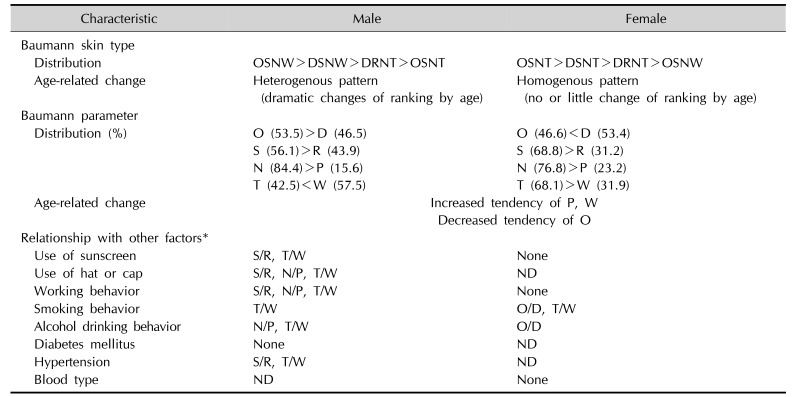
|
Characteristic |
Male |
Female |
|
Baumann skin type |
|
|
|
Distribution |
OSNW>DSNW>DRNT>OSNT |
OSNT>DSNT>DRNT>OSNW |
|
Age-related change |
Heterogenous pattern (dramatic changes of ranking by age) |
Homogenous pattern (no or little change of ranking by age) |
|
Baumann parameter |
|
|
|
Distribution (%) |
O (53.5)>D (46.5) |
O (46.6)<D (53.4) |
|
S (56.1)>R (43.9) |
S (68.8)>R (31.2) |
|
N (84.4)>P (15.6) |
N (76.8)>P (23.2) |
|
T (42.5)<W (57.5) |
T (68.1)>W (31.9) |
|
Age-related change |
|
Increased tendency of P, W |
|
Decreased tendency of O |
|
Relationship with other factors*
|
|
|
|
Use of sunscreen |
S/R, T/W |
None |
|
Use of hat or cap |
S/R, N/P, T/W |
ND |
|
Working behavior |
S/R, N/P, T/W |
None |
|
Smoking behavior |
T/W |
O/D, T/W |
|
Alcohol drinking behavior |
N/P, T/W |
O/D |
|
Diabetes mellitus |
None |
ND |
|
Hypertension |
S/R, T/W |
ND |
|
Blood type |
ND |
None |

The differences in sexual dimorphism of skin type are primarily derived from the differences in the intrinsic properties of the skin. Several clinical studies have demonstrated differences in skin parameters such as hydration, sebum production, skin color, hair follicle density, and facial topography between sexes
202122. Generally, male skin appears to be thicker with a higher amount of collagen and a lower amount of subcutaneous fat than female skin
2223.
In addition to biophysiological differences, it is necessary to consider the effect of geographic, and sociocultural predilections. As shown in this study, the difference in behavior in terms of sun-protection, smoking, and drinking were remarkable between sexes. Additionally, inequalities in the prevalence of skin disease, differences in self-reported skin complaints, intensity of self-awareness, and illness behavior between the sexes have been previously reported
232425. Therefore, it could be presumed that the difference in lifestyle factors may enhance the difference of inherent characteristics, making the gap between sexes more prominent.
Lastly, the relationship between skin type and lifestyle factors could be described from a macroscopic point of view. In this study, behaviors belonging to the same sun-protective behavior category showed different relationships with the Baumann parameters. For example, the wrinkled type was higher in the group who did not use sunscreen compared to the group who did, while this type was lower in the group wearing no hat or cap compared to the group that did. Furthermore, outdoor workers were associated with having more sensitive, pigmented, and wrinkled types than indoor workers. An outdoor worker was known to be associated not only with high cumulative sun exposure but also a low acknowledgement of photocarcinogenic potential
26. Consequently, the results of this study should be interpreted in terms of a mixture of multiple behavioral factors, including compensation behavior (people using sunscreen are more likely to be exposed to the outdoors) and uncertainty of temporal relationship (people with a vulnerable nature to pigmented or wrinkled skin are more likely to seek sun-protective behavior)
27.
There were few structural and analytical limitations in this study. Since the data were derived from a participant's subjective description and recall of a specific point in time, there is a possibility of recall bias. Since these conditions were not diagnosed by a doctor, there was also a possibility that the objectivity of identification for skin condition could be reduced. For example, the respondents might be misclassified to pigmented type by judging non-pigmented skin lesions, including seborrheic keratosis or non-melanoma skin cancer, as true pigmentary conditions
4.
Another drawback was the representativeness of collected cases. Although we analyzed the data by region, it should be considered that there was both a high rate of migration between regions and a difference between the working and residential areas. There was also a limitation that the distribution of skin type could be influenced and biased depending on the characteristics of collected subjects. However, given that the proportions of each demographic variable including smoking, drinking, and comorbidities in this study were similar to the national data reported by Statistics Korea, validation of this survey-based study can be established.
In conclusion, we report differences in BST according to age and region in the Korean male population. By comparing the differences in skin type between sexes, we provide insights into the perception of illness and the underlying pathophysiology of skin conditions. The role of dermatologist will become much more important for the interpretation and application of this data. The development of customized diagnosis and treatment should be pursued based on a systemic and practical skin type classification.
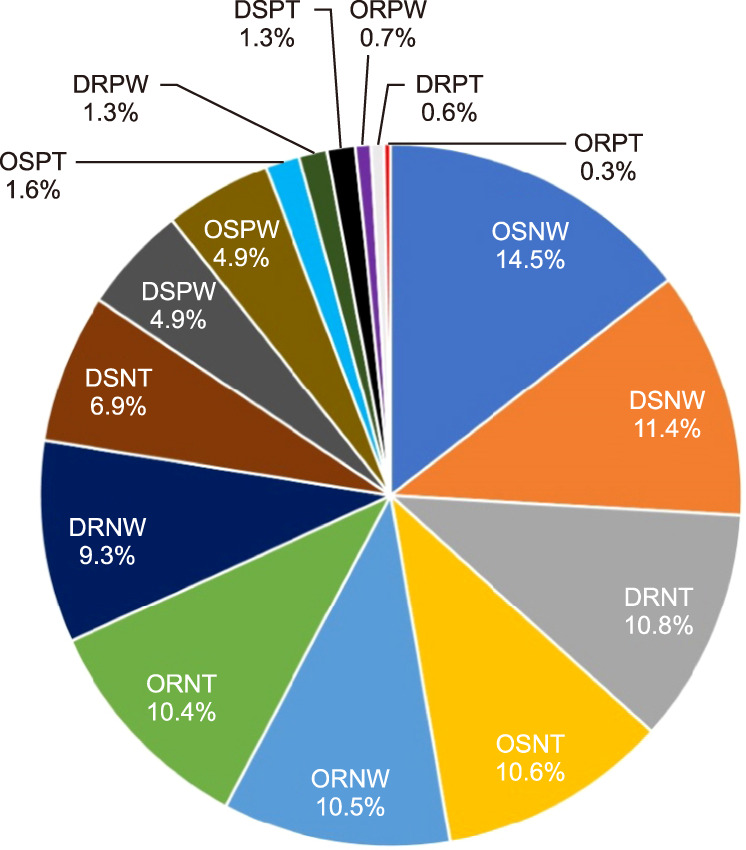
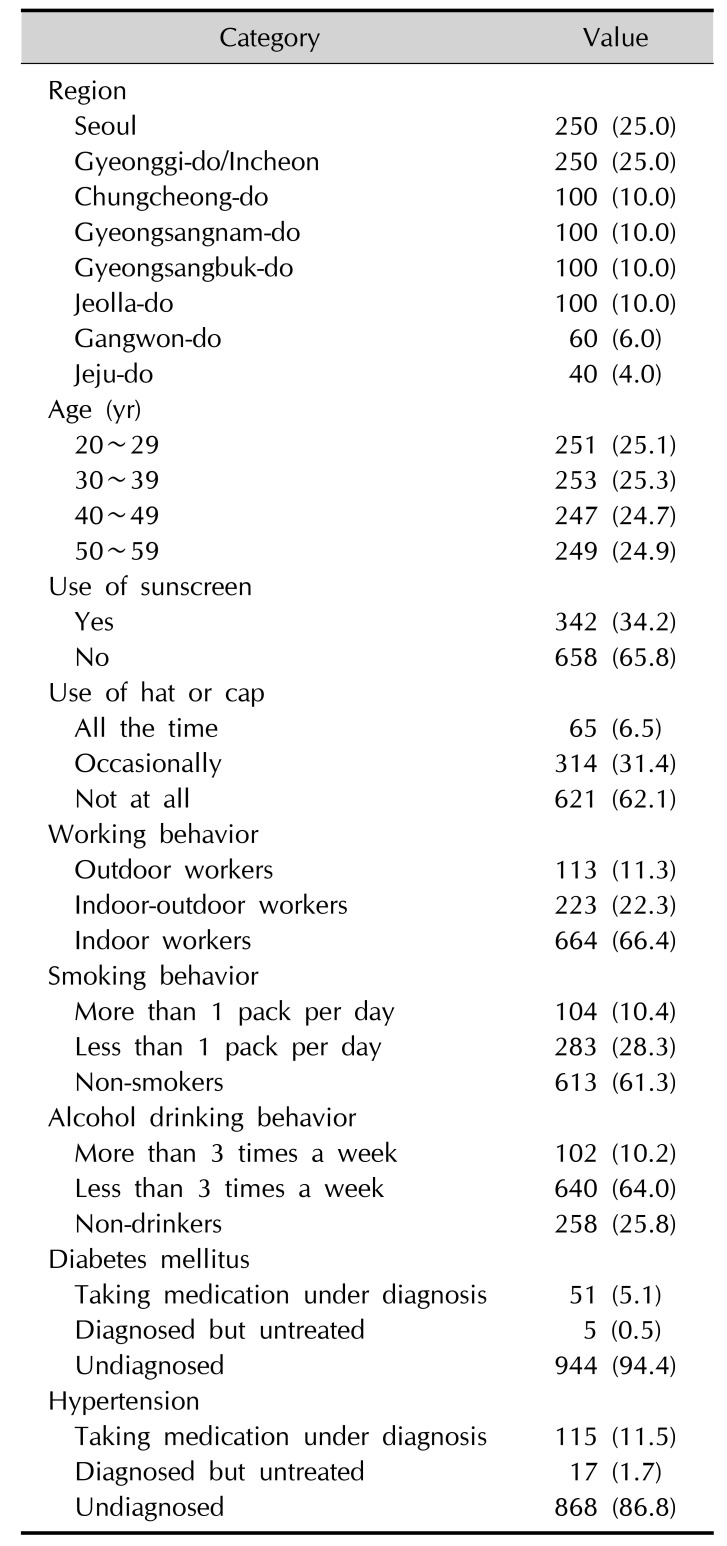
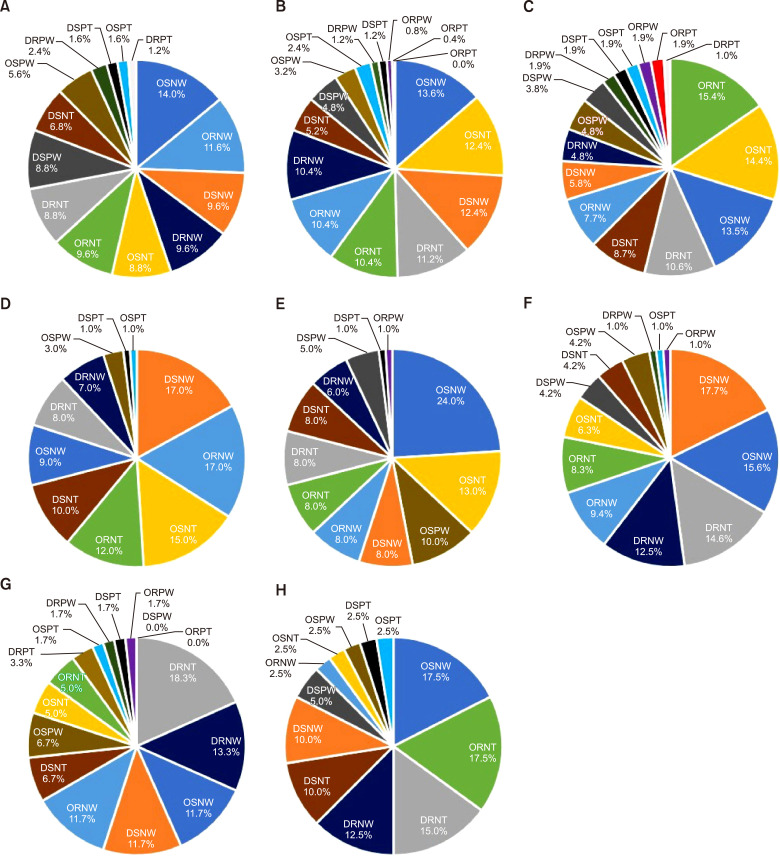





 PDF
PDF Citation
Citation Print
Print



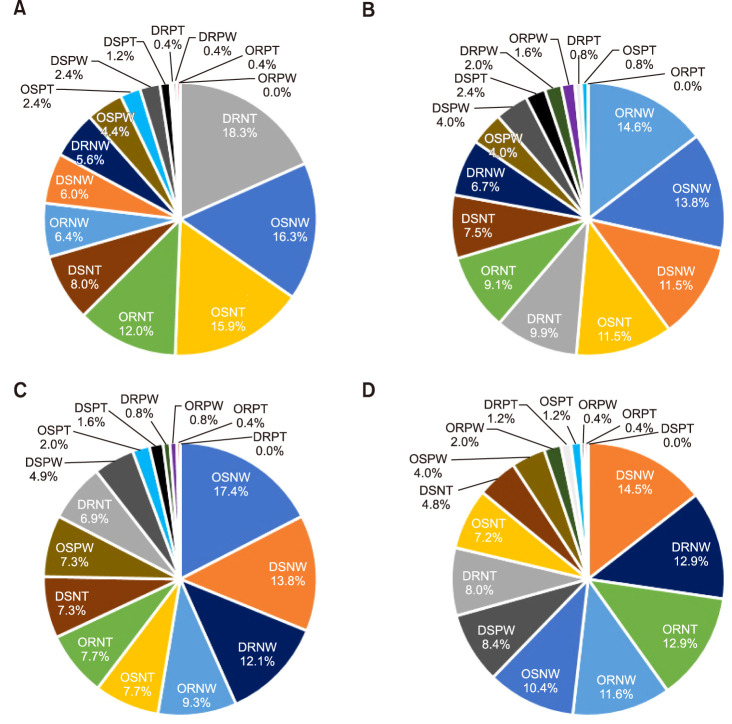
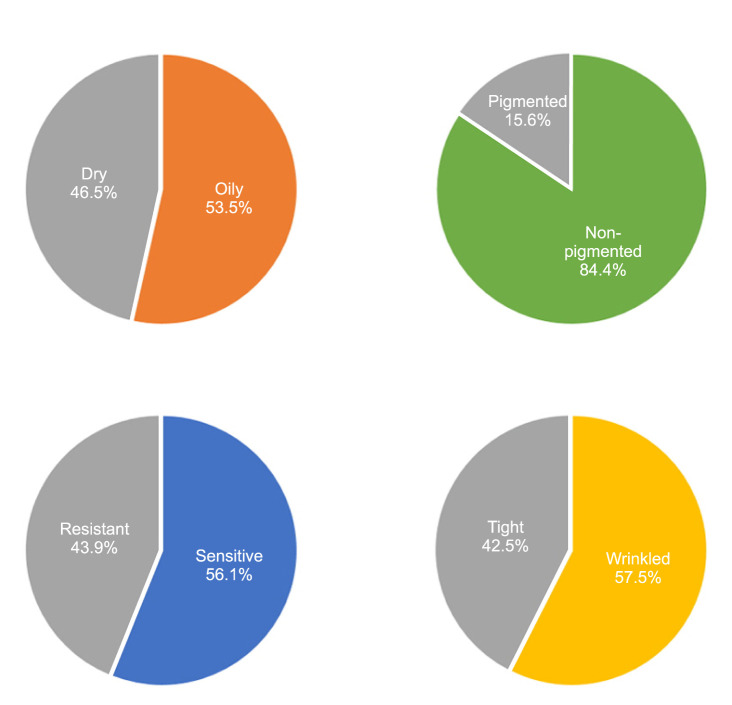
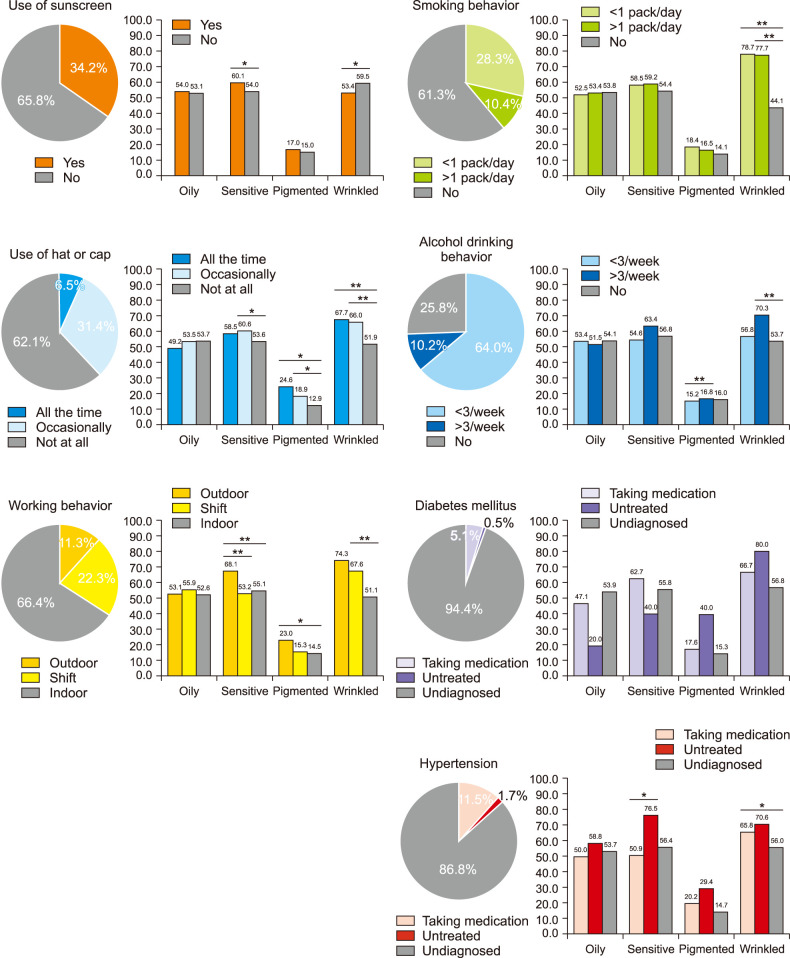
 XML Download
XML Download